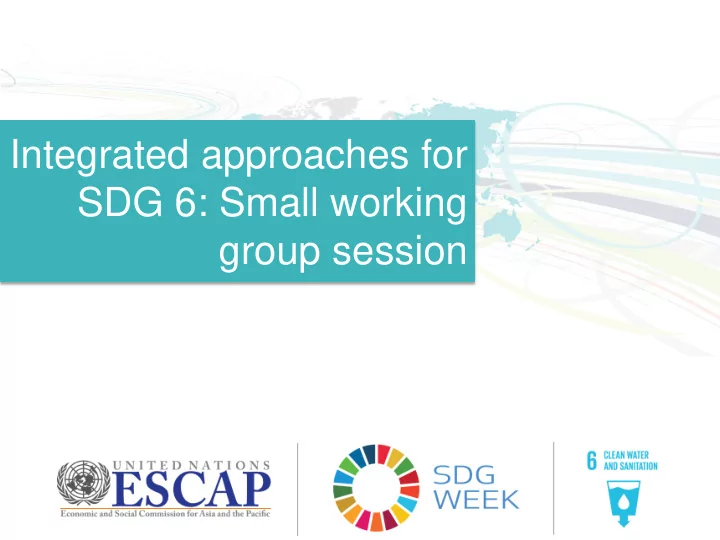

Integrated approaches for SDG 6: Small working group session
Case study: Singapore’s Kallang River-Bishan park ABC Waters project Main purposes: • Educate public about importance of water; • flood protection; • help purify water through natural filtration; • 30% increase in biodiversity (66 species wildflower, 59 species of birds, 22 species of dragonfly have been identified); • recreational and community benefit
Systems Diagramming Exercise • Exercise objective : Give participants hand-on experience with systems mapping in the context of SDG 6 indicators • Three ways to create a System map 1. The “Jigsaw Puzzle” Approach: Put all the puzzle pieces (indicators + other system elements) on the table and start seeking cause-and-effect links, patterns, and loops 2. The “Mental Model” Approach: Start with your existing stories or beliefs about how things work, then match the indicators to the mental picture you have – and make adjustments based on new insights you have about the connections and causal relationships 3. The “Start with One” Approach: Start from one indicator – usually, one reflecting a trend that you have a special interest in influencing – and begin to ask, “What is causing this to happen? (And what is causing that? and so on.) And what effect is it having? (And what effect is that having? and so.)
Systems Diagramming Example 1. Agree as a group on the indicators representing the central output of the case 2. Start with the immediate Positive or negative ‘drivers’ (causes) and causality ‘responses’ (effects) 3. Find the cause/effect links. Elaborate out to 2-3 layers away from the central trend – e.g., cause > cause > cause > key indicator > effect > effect > effect. Also try to find the where feedback pathways (loops) Try to find casual exists. loops!
Recommend
More recommend